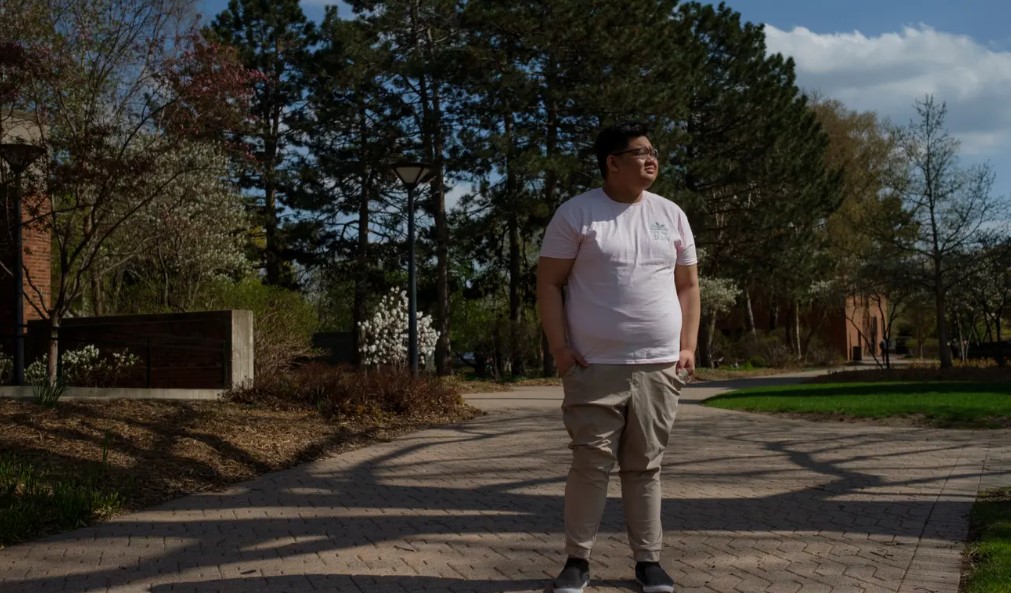"I can't afford groceries":
why one-third of US college students don’t have enough to eat

There are now around 800 food pantries on US college campuses, and demand is growing as pandemic-era resources end
For Anthony Meng, a senior at Hamline University in Saint Paul, Minnesota, food insecurity can take on many different forms. On some days, it means skipping meals as he’s rushing to work or to class. On others, “it’s like, I don’t think I can afford groceries,” he said. “Which is difficult to say at times, but it’s the reality of the situation.”
Meng, 22, rolls out of bed every morning around 9 or 10am. His schedule is typically packed with back-to-back lectures and extracurriculars. More often than not, Meng finds himself heading out for the day with just a granola bar in hand, if anything at all.
Fortunately there’s a place on campus where he can seek refuge: the Food Resource Center, a beloved hangout where students and staff can stock up on free fresh produce and groceries. Funded by donations, grants and student fees, the center also offers prepared meals, microwaves to heat them up in, and couches and a TV for people to gather, eat and pass the time.
“It’s an area of campus where I can not only find solace,” Meng said. “The fact that I can go get a hot meal, it means the whole world.”
Pantries like the Food Resource Center are an increasingly popular resource as food insecurity persists among college students. Recent estimates put the number of campus pantries at about 800, most of them established in the past decade.
According to a 2020 survey of more than 195,000 students across the country, conducted by the Hope Center at Temple University, nearly 30% of students at four-year colleges reported experiencing food insecurity. For those at two-year colleges, the number was even higher – almost 40%. And with changes to student eligibility requirements for federally funded hunger relief programs set to take place in May, advocates say the situation could get even worse.
Most Hamline students, including Meng, plan their visits to the Food Resource Center around its delivery days – Wednesdays and Fridays. After the food donation trucks pull away, the center’s aisles start to brim with a medley of staples and unexpected treats, from perfectly fine produce to an array of unsold Trader Joe’s snacks.
For the past two years, Meng has received no financial assistance from his family to cover tuition or rent, so he works at H&M on weekends to pay for school and basic needs. The ability to get food on campus at no cost, with no questions asked, means that it’s just a little bit easier to focus on simply being a student.
The Guardian | View Original Article